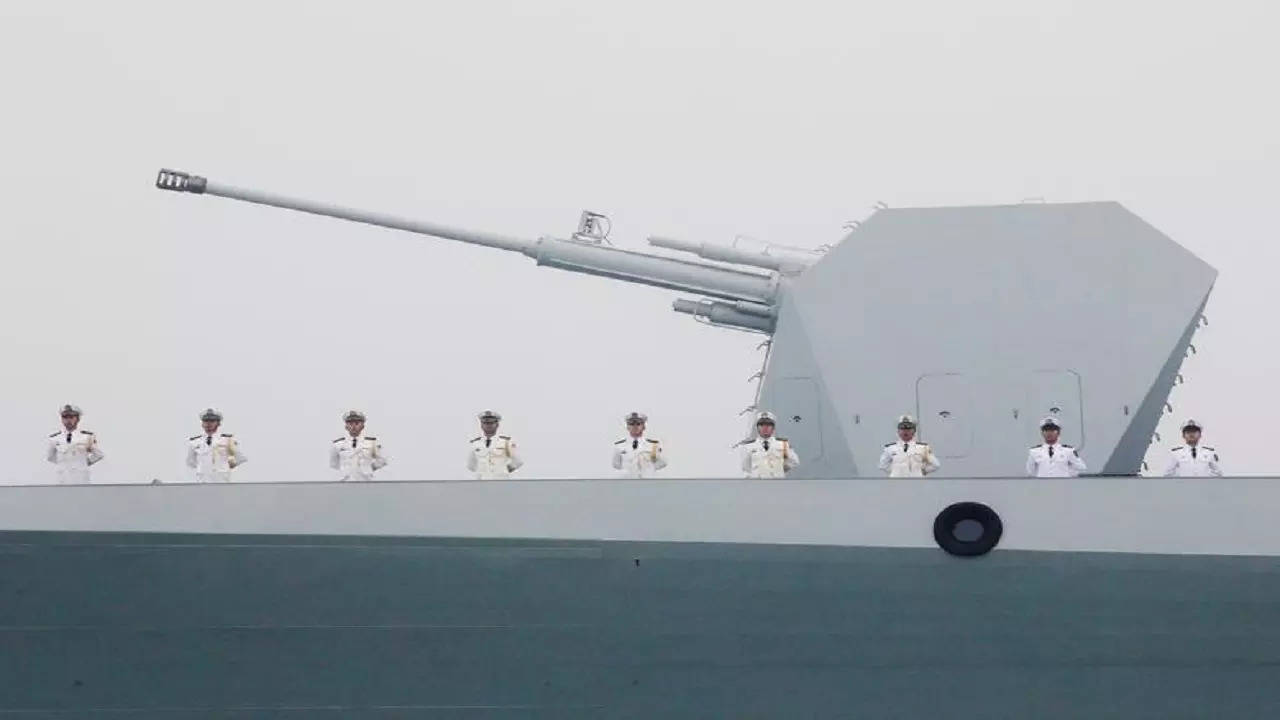What are China’s carrier battle groups that it has threatened will sail Indian Ocean Region soon
A Chinese security officer and military expert stated that India should be prepared for the PLA carrier battle group that would be sailing in the Indian Ocean very soon, a few days after the PLA Navy celebrated ten years of its first aircraft carrier Liaoning. These comments from China have raised concerns in New Delhi who are already upset by Chinese antics in Eastern Ladakh, Arunachal Pradesh, and other parts of the Line of Actual Control (LAC).

PLA Navy representative image.
Photo : REUTERS
New Delhi: The comments from China about increasing presence in the Indian Ocean have raised concerns in New Delhi who are already upset by Chinese antics in Eastern Ladakh, Arunachal Pradesh, and other parts of the Line of Actual Control (LAC).
As per an analysis by the Eurasian Times, Chinese strategists and experts' writings on China's aspirations to build a modern fleet and its prospective use in the Indian Ocean region.
In essence, they favour a protectionist and non-interventionist strategy centred on safeguarding its maritime communication routes (SLOCS). An earlier investigation found that there had been indicators of a confrontational approach to dealing with the US and India.
Nothing, however, points to an assertive approach that would jeopardise the mainstay of Indian maritime security. A carrier combat group in the IOR, however, might move from this location.
So, what are these carrier battle groups that China is so eager to flaunt?
An aircraft carrier capital ship and its several escorts make an entire naval fleet known as a carrier battle group (CVBG).
In the future, China intends to deploy a number of carrier battle groups. Currently, Type 055 destroyers for area air defence with anti-submarine warfare, Type 052C or Type 052D destroyers for air defence, Type 054A frigates for anti-submarine and anti-ship warfare, 1-2 Type 093 nuclear attack submarines, and 1 Type 901 supply ship are used by China's two aircraft carriers, the Liaoning and Shandong.
China is now looking to include a third carrier that is likely to go into service in 2023. Additionally, China is developing the Type 055, a new, larger class of air defence destroyers.
Because it is reorienting and developing to compete with the US Navy, the PLA Navy is already significantly larger than the Indian Navy.
In the near future, Beijing might engage in excessive maritime power against the IOR. The presence of an overtly military installation in Djibouti and proximity to several Belt and Road Initiative (BRI) ports will considerably reduce the logistical challenges of conducting operations in the IOR.
China already has roughly 15 frontline resupply ships, which is significant. With the Y-20 strategic airlifter in service, the PLAN's capacity to conduct outside-area operations is no longer as hampered.
The usefulness of carrier battle groups in naval combat in the twenty-first century is up for dispute. The CVBG offers unequalled firepower and force projection capabilities, according to its supporters.
Contrarians claim that CVBGs are becoming more and more susceptible to cruise missiles and armed ships, especially those with supersonic or even hypersonic flight and the propensity for radical trajectory manoeuvres to avoid anti-missile systems.
Additionally, it should be highlighted that CVBGs were developed for Cold War scenarios and are less effective at establishing control in coastal areas.
Trending:
End of Article
Subscribe to our daily Newsletter!





Related News





Interview with Dr. Debraj Shome on Shifting Perceptions in Cosmetic Surgery: Prioritizing Safety and Innovation

1937 Mercedes-Benz 540K: The Resurfacing of a Star from The Pranlal Bhogilal Collection!

Brothers Hacked In Front Of Eyes, Boy, 10, Shares Chilling Details Of UP Double Murder

Delhi Police Recovers Body Of ACP'S Missing Son From Haryana's canal

15-Year-Old Rape Survivor Hangs Herself After She Was Found Pregnant









